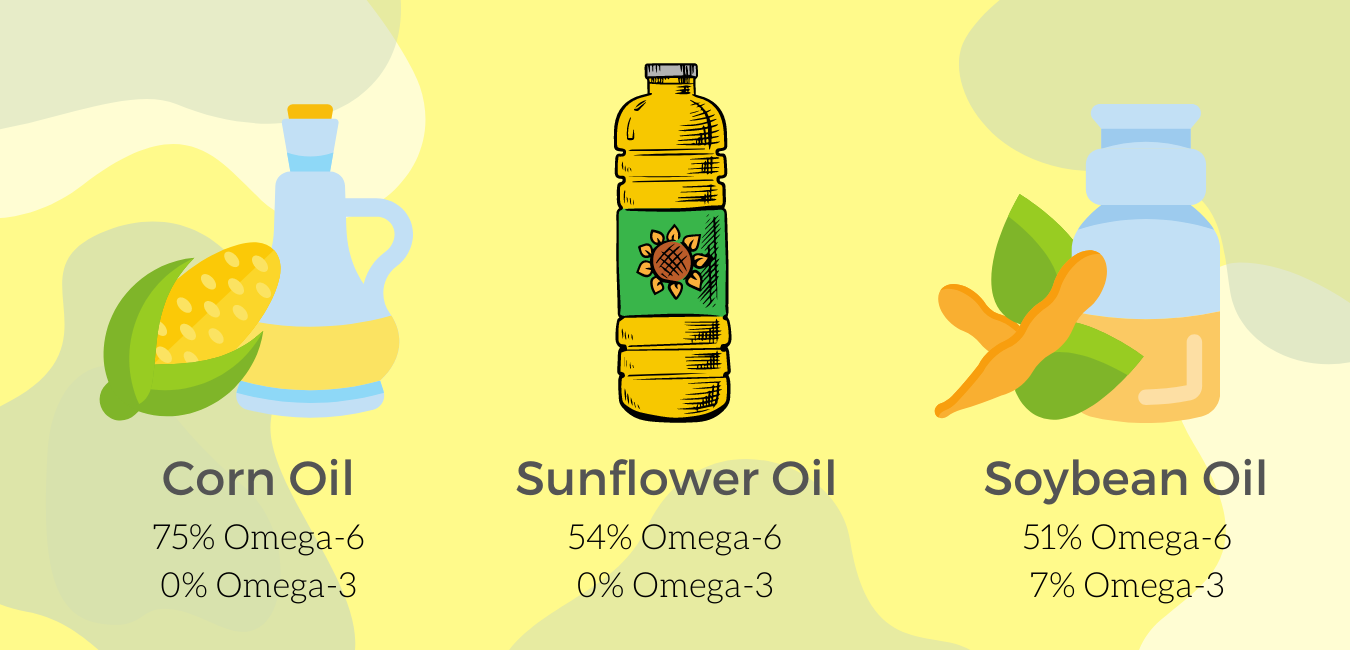Is almond milk good for you or could it be causing inflammation?
Almond milk has quickly become the “healthy” alternative for regular dairy milk. I’ve been riding the almond milk train for the last 8 years at least. I’ve always been under the impression that it’s a healthy choice. However, just because something is dairy-free does not automatically mean that it is good for us. Turns out, almond milk can actually be a large cause of the bloating and inflammation we are feeling. So, maybe it’s not as good for us as everyone seems to claim.
The Omega-6 to Omega-3 Ratio
In order to have minimal inflammation in the body, it is important we maintain a 4:1 ratio, or even lower, of omega-6 to omega-3 in our bodies. This ratio has been linked to a 70% decrease in overall mortality rates, making it a powerful factor in our health (“The importance of the ratio of omega-6/omega-3 essential fatty acids”). In the standard American diet, we eat way too many omega-6 rich foods and not nearly enough foods rich in omega-3.
Foods High in Omega-6
What foods are high in omega-6? Highly processed vegetable oils and nuts are two of the biggest food groups high in this particular fatty acid. Back in the hunter-gatherer days we may have found a small handful of nuts every few months. Now, we are eating them in concentrated forms like almond milk, almond butter, almond flour, and peanut butter. What once was a small treat has now taken over our diets, causing this ratio to skyrocket into unhealthy numbers.
Highly processed vegetable oils, unlike nuts, were entirely inexistent at one point. We invented vegetable oils like soybean oil, canola oil, and sunflower oil in order to make processed foods cheaper to manufacture. In my opinion, getting rid of these oils is the best thing you can do for your health. Throw them away and opt for olive oil, avocado oil, or ghee instead (“Health Implications of High Dietary Omega-6 Polyunsaturated Fatty Acids”).
While some people may argue that we need omega-6 in our diets and these foods are essential to consume, we do not need nearly as much as we are consuming. We get enough essential omega-6 from foods where the ratio isn’t highly unproportional. For example, walnuts still have omega-6 but contain a healthy amount compared to the omega-3 content.
Omega-6 in Almond Milk
Let’s go back to almond milk and why this can be such a big deal for inflammation. Most of us who are health-conscious are aware that vegetable oils are bad. They aren’t fooling us. However, almonds are much more sneaky. They disguise themselves as a whole, natural food. They come straight from a tree, how can they be bad for you? Well, like I said before, our bodies aren’t meant to consume them in the concentrated ways that we currently are.
There are about 90 almonds in a cup of almond flour.
There are about 2 cups of almonds in a half gallon of almond milk.
There are around 2 cups of almonds in 1 cup of almond butter.
Could you imagine picking up 90 almonds and eating them as a snack? Probably not. But you could easily eat 1 cup of almond flour in a serving of pancakes.
My Personal Journey
This discovery about the truth of almond products (sounds so dramatic) came from my own journey trying to find the source of my bloating and inflammation. I was doing everything right- never consuming vegetable oils, eating lots of fish, avoiding gluten, but for some reason I was still so bloated. Then I came to discover how many almonds were actually in almond products. I started limiting my almond products and I’ve never felt better since. Here are some swaps I made:
Almond milk for coconut milk
Almond flour for coconut or cassava flour
Almond butter for avocado spread (not the same, but just as delicious on a piece of sourdough)
Read more about how to increase the number of omega-3 in your diet by reading my blog post on Balancing Your Omega-3 to Omega-6 Ratio.
Subscribe to my Back to Our Roots newsletter where I discuss more on nutrition, ancestral living, and returning back to the way we once lived by being in touch with body, mind, and spirit.


